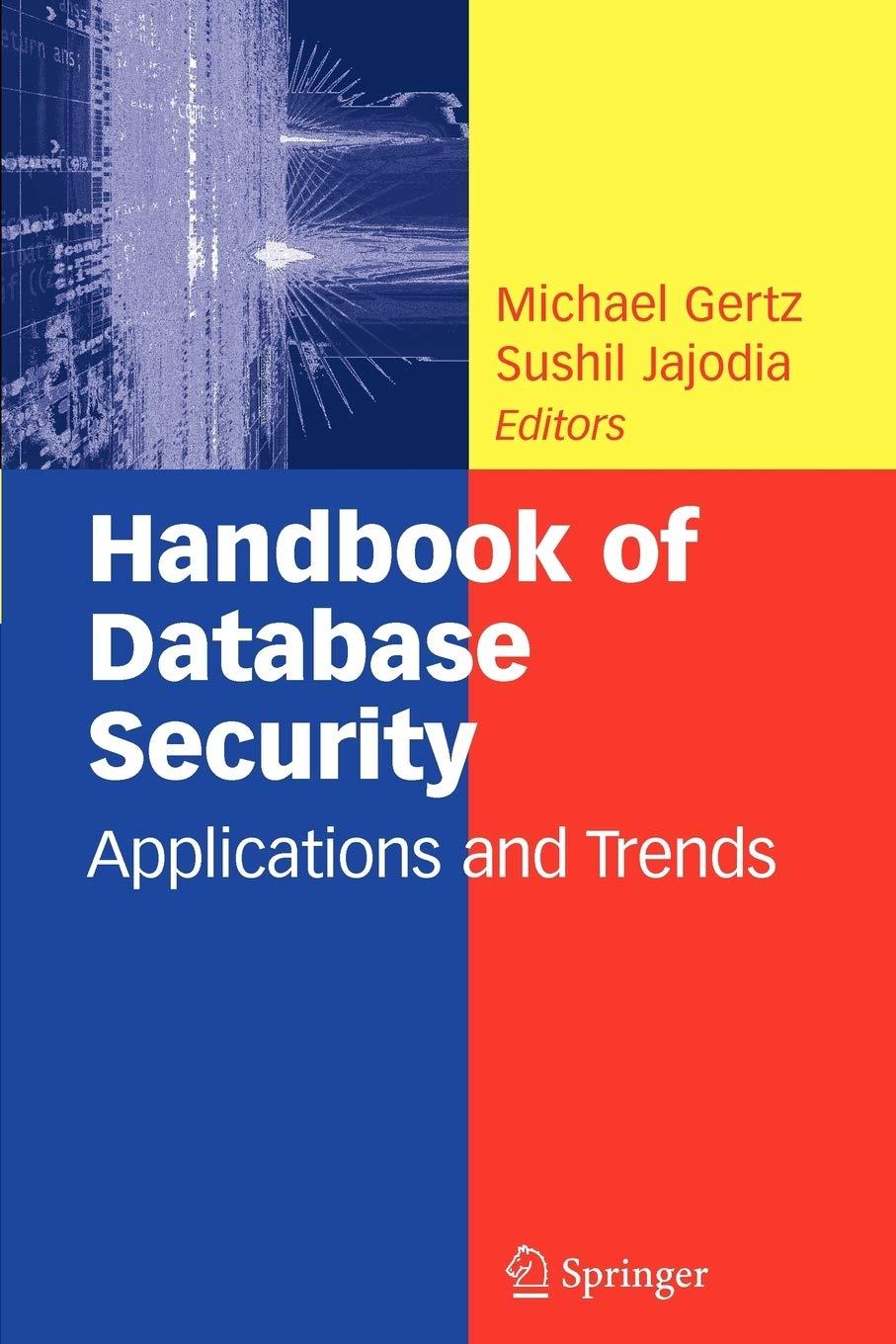Question
Write a Python program that contains a function called count_inversions that will count the number of inversions in a list of values. An inversion is
Write a Python program that contains a function called count_inversions that will count the number of inversions in a list of values. An inversion is a pair of items in a list that are reversed from their natural ordering. For example, in the list [1, 3, 2], the pair of items [3, 2] is an inversion, because 2 should come before 3 in a sorted list. The pair [1, 3] is not an inversion as 1 comes before 3.
Note that a list of length 1 has no inversions.
The count_inversions function will have a single parameter, which is the list to count inversions in. The function should sort the list in ascending order using merge sort, and return the number of inversions in the original list as well as the sorted list. You may use merge sort code from the lecture or the textbook as the basis for your function. You can copy the lecture or textbook code directly, and make modifications required to count the inversions. However, you should not make changes to the underlying merge sort algorithm. You may assume the list contains only integers.
Your lab exercise is to create a Python program called inversion.py that contains a function called count_inversions that will count the number of inversions in a list of values. An inversion is a pair of items in a list that are reversed from their natural ordering. For example, in the list [1, 3, 2], the pair of items [3, 2] is an inversion, because 2 should come before 3 in a sorted list. The pair [1, 3] is not an inversion as 1 comes before 3.
Counting inversions can be done using a modification of the merge sort algorithm, specifically at the merging step. Suppose that you are merging two lists, and you know how many inversions were in each half. The total number of inversions in the merged list will be the number of inversions in the left half, plus the number of inversions in the right half, plus the number of inversions between the two lists. The number of inversions between the two lists can be found by keeping track of the number of items remaining in the left half of the list when you choose an item from the right half as the next item to merge.
For example, if the initial list is [5, 1, 2, 4], the left half ([5, 1]) contains 1 inversion and is sorted as [1, 5]. The right half ([2, 4]) contains 0 inversions and is sorted as [2, 4]. When we merge the left and right halves, we first choose 1 from the left half, then 2 from the right half. When we choose 2, there is one item remaining in the left half, so we add one inversion to the count. Next, we choose 4 from the right half, and again we have one item remaining in the left half, so we add one more inversion to the count. Finally, we choose 5 from the left half. The total number of inversions is (the number of inversions in the left half) + (the number of inversions in the right half) + (the number of inversions counted in the merge step), which is 1 + 0 + 2 = 3 in this example.
Note that a list of length 1 has no inversions.
You must use a modification of the Mergesort algorithm to solve this problem. Solutions not based on Mergesort will be penalized 50% of the total marks for this exercise.
Sample Run 1
my_list = [10, 9, 8, 7, 6, 5, 4, 3, 2, 1]
inversions = count_inversions(my_list) print(my_list)
print(inversions)
Sample Output 1
[1, 2, 3, 4, 5, 6, 7, 8, 9, 10]
45
Sample Run 2
my_list = [1, 2, 3, 4, 5, 6, 7, 8, 9, 10]
inversions = count_inversions(my_list)
print(my_list)
print(inversions)
Sample Output 2
[1, 2, 3, 4, 5, 6, 7, 8, 9, 10]
0
Sample Run 3
my_list = [1, 2, 10, 4, 5, 8, 7]
inversions = count_inversions(my_list)
print(my_list)
print(inversions)
Sample Output 3
[1, 2, 4, 5, 7, 8, 10]
5
Step by Step Solution
There are 3 Steps involved in it
Step: 1

Get Instant Access to Expert-Tailored Solutions
See step-by-step solutions with expert insights and AI powered tools for academic success
Step: 2

Step: 3

Ace Your Homework with AI
Get the answers you need in no time with our AI-driven, step-by-step assistance
Get Started


